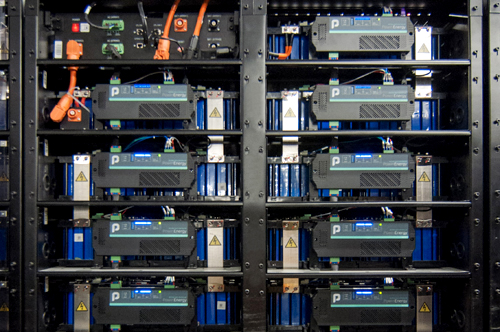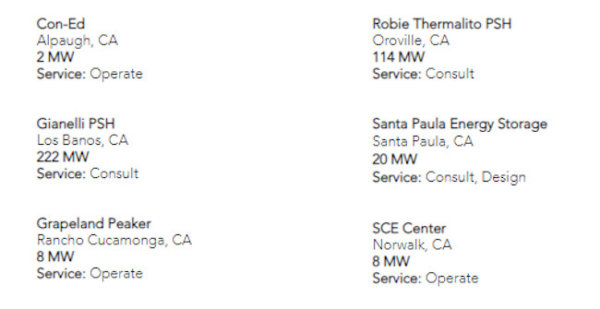By Sheryl Hamlin
History
A previous BESS (Battery Energy Storage System) had been planned and approved for this location starting in 2016 when the FERC (Federal Energy Regulatory Commission) approved a 9.99 MW plant for Santa Paula. FERC
Two Community meetings were held in Santa Paula to introduce the concept:
3/28/2017 First Community Meeting
5/24/2017 Second Community Meeting No Zaid attendance at this meeting. Was ZGlobal negotiating the buyout at this point? Second Community Meeting
In May 2017, a mitigated negative declaration of the ZGlobal project was sent to the CA Energy Department. MND
1/23/2018, the Santa Paula Planning Commission approves the ZGlobal project with a CUP. From the staff report of 9/30/2020 the timeline is given as follows:
On January 23, 2018, the City of Santa Paula Planning Commission adopted Resolution No. 3774 approving Project No. 16-CUP-02 BESS and certifying a Mitigated Negative Declaration (SCH No. 2017051036) for a Battery Energy Storage System (BESS) located at 132 North 13th Street, Santa Paula, CA 93060. This land use entitlement was valid for one-year, through 23 January 2019.
Read about that meeting here
As of 9/30/2020, the project is shown on both the ZGlobal website and the esVolta website.
“Innovative non-utility off-take agreement represents a first in the storage industry”
esVolta website
Change of Ownership
The Ventura County Assessor shows a change in ownership as of 8/23/17. Click here with APN 101-0-241-185. The previous sale was 10/12/2016 as reported here. Who was the owner when the Planning Commission approved the project in 2018?
How Does the New BESS from esVolta Differ from the ZGlobal Bess?
The ZGlobal BESS was a series of metal storage containers, each containing 5 MW of lithium ion battery power. The proposed system would have accommodated up to 20 MW. Batteries were supplied by Samsung as was the battery management software. ZGlobal never addressed how the battery management system incorporated the addition of new containers into a “hot” system. The ZGlobal BESS site had an office which was manned during office hours and a SCADA system. ZGlobal’s system would be activated to deliver power when the grid needed more power. ZGlobal planned a solar array to charge the batteries.
The site and project were purchased from ZGlobal by esVolta, but no date was given for that transaction in the staff report. Ventura County Assessor records the sale on 8/23/2017. The 30 MW/60MWh esVolta BESS is monolithic in that all modules, each containing 255 lithium phosphate cells, are installed initially. The batteries are supplied by Powin, with offices in Oregon and Taipei, Taiwan. The staff report says:


“lithium ion phosphate batteries are safer than other commonly used lithium-ion alternatives such as cobalt-based lithium metal cathodes. Lithium ion phosphate batteries nearly eliminate the risk of battery fire propagation or explosion because of the improved stability and very high thermal runaway point. “
The esVolta is unmanned with a SCADA system. The staff report indicates “The project would be remotely monitored at all times” but it does not say by whom, where the response team is located and what the response times would be in the event of an alarm.
The esVolta BESS will be charged by the grid not by renewable solar. The batteries charge and discharge to the grid as needed. The esVolta website says: “Innovative non-utility off-take agreement represents a first in the storage industry”.
Applicants responding to questions were Mr. Rishad Olpadwala (Development), Chris Baker (Engineering), and Melissa from Rincon for CEQA.
Concerns
Five concerns were received from citizens about the project:
Comment on the disastrous battery fire in Arizona at an APS (Arizona Public Storage) BESS. Read about the report here: APS Details Cause of Battery Fire and Explosion, Proposes Safety Fixes The applicant is in contact with the fire chief and indicated that new fire safety standards have been developed.
Comment on ingress/egress for a dead-end street. The applicant indicated that VCFPD has determined they can turn around and that helicopters could be deployed.
Why does the proposed BESS not comply with CPUC regulations? Because, according to the applicant, the BESS is a privately owned venture and not a public utility.
SCE must permit and construct the interconnect to the Wakefield Station. According to the applicant, this process started “three years ago” and they are now negotiating an interconnect agreement. Note that three years ago would mean that ZGlobal and esVolta were in talks prior to the final approval by the Planning commission of the ZGlobal project in 2018.
Public Comments
The meeting was held via Zoom. The Planning Commission deploys Zoom as a mass meeting, which means that each commissioner, staff member or citizen must get an individual session from the Zoom administrator. Comments may be submitted via the comment card on the city’s website which limits comments to 250 words or by raising hand (virtually) via Zoom.
Juan Ramirez, citizen, asked about the toxic gases which were described in the staff report and how they were released. If dangerous, he said, then why build so close to residential? Note the staff report said that the gases could travel 33 feet.
Juan Ramirez then asked about natural disasters. The applicant said they had considered such disasters in the planning.
Juan Ramirez questioned the green benefit since the system is to be charged by the grid and not by solar. The applicant responded by saying that SCE is retiring gas powered generators so much power on the grid is green generated by solar and wind. California is wasting green energy, he added, because it has no storage.
What are the local benefits, Mr. Ramirez asked. The applicant responded with property tax and sales tax and a $45,000 credit toward a city-owned BESS at a yet-to-be-determined location.
Sheryl Hamlin submitted the following questions via the city’s comment card system. The Planning Commission administrator read each question and then asked the applicant to respond. A clarification was asked for question number 2 to which Sheryl Hamlin responded via Zoom.
1) The proposed modifications include changes in the following: battery manufacturer, system integrator, battery management software, battery type, amount of stored power, landscaping and structure. With changes in scope and materials, this appears to be a new project entirely and not a simple modification to an existing project. What was the justification for the ministerial granting of a time extension to the Zglobal project which clearly is non-existent? James Mason responded that CEQA allowed this ministerial approval of the CUP change.
2) What is the agreement with Edison for the storage? Length of contract? Time to react to power failure? The applicant responded that the power purchase agreement contract is private but they have an agreement with a Community Choice Aggregator (CCA) to purchase their power. He did not give any details of such. SCE has given a 20 year period for the Interconnection Agreement, he said. He also said that Santa Paula had originally decided to join a CCA but this had changed.
3) How will the integrator simulate a down power situation for testing? The applicant indicated that a circuit breaker will be used for testing to cut power to the entire BESS.
4) What is the battery disposal plan? Are the lithium phosphate batteries recyclable? How are they disposed and where? The applicant indicated that the battery vendor will provide recycling.
5) How do the lithium phosphate batteries compare to the originally proposed lithium ion batteries in terms of fire? The engineering manager replied that lithion ion phosphate is less dense and has less operating voltage so lithium ion phosphate is less volatile.
6) Were neighbors notified by mail about the new project? Staff responded yes, all by mail.
Commission Questions/Discussion
Commissioner Fourage asked about catastrophic events and the number of facilities the applicant operates. The applicant said that although esVolta is a national company, the “vast majority” of projects are in California. Chris Baker responded about lithium phosphate security.
Commissioner Fourage asked about cell replacement and safety. Cell replacements are not kept on site, but delivered by the vendor who has given a 20 week lead time for such replacement, according to the applicant. With Mandalay shut down and Ormond scheduled for retirement, what guarantee exists for the BESS to provide power to this area? The applicant said there is no clear cut path to keep power in Ventura County once it is on the grid. They are looking at a plan with San Jose to design two sources of power supplies from the BESS but have not solved that problem.
Commission Ikerd asked about the battery life. The applicant indicated 10 to 13 years. He also asked about battery discharge time. The applicant indicated that the entire BESS would be discharged completely in two hours, after which time they go into recharge mode. During the day, the applicant noted that the system goes up and down responding to the grid.
Commissioner Herber asked about routine maintenance in a “unmanned” environment. The applicant said the Cowan (?) provides operations and maintenance and someone “checks in” daily. Chris indicated that SCE can remotely monitor via SCADA 24 X 7.
Vote
The commission voted 4-0 with Commissioner Dunkel recusing due to location conflicts.
Commission Ikerd voiced complaints about how the commission allowed the public too much time speaking. The staff responded that in the current Zoom environment with no webinar and no recording, this is difficult. To download the staff report and listen to the audio, click here.
Though not discussed at the meeting, a mega battery project was approved in El Rio off Vineyard. El Rio/Vineyard
Good explanation of MW and MWh here
For more information about the author click sherylhamlin dot com
Get Citizensjournal.us Headlines free SUBSCRIPTION. Keep us publishing – DONATE





APS battery fire mentioned in article…
https://www.greentechmedia.com/articles/read/aps-battery-fire-explosion-safety-lithium-mcmicken-fluence
Larger than original proposal. Takes up entire lot…
https://www.esvolta.com/santa-paula
The TImeline raises red flags. If esVolta owned the project in 2018, as it appears, then the Planning Commission in 2018 approved a project which was never intended to be built.
On January 10, 2019, ministerial changes to the ZGlobal CUP which was purchased by esVolta were made thirteen days before expiration of CUP.